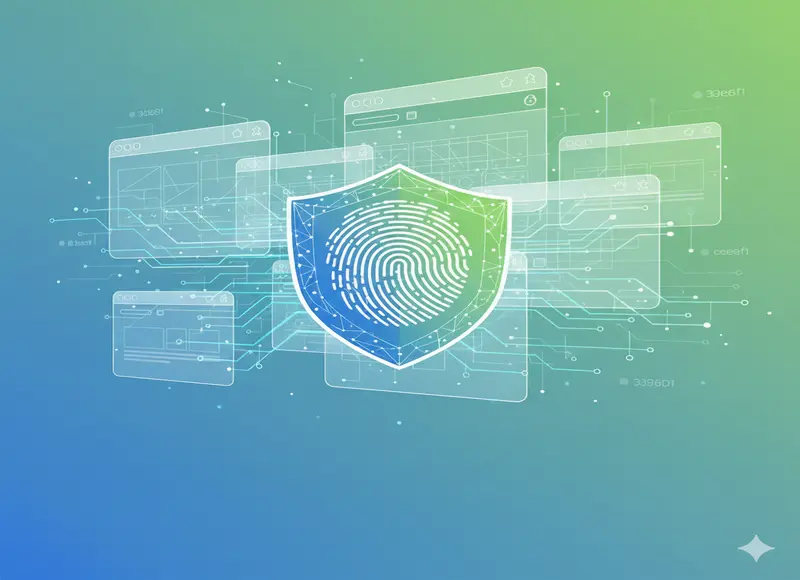Table of Contents
Discover the top 10 online sales channels for 2024 and boost your business with our expert insights and strategies. Maximize your business's online presence and profitability.

Nowadays, finding sales channels for your business shouldn't be a challenge. The challenge is to choose the proper ones to get the highest ROI.
In this article, we've gathered the most effective types of sales channels in 2024 that work great, regardless of your industry and type of business.
Read on and catch a dose of inspiration!
What are Sales Channels?
A sales channel is a way to reach customers with your offerings to promote and sell them. It can be a platform or a place on the web that allows you to present your services or products to external audiences, for example, online stores or social media.
Sales channels can be divided into:
- Direct sales channels – direct interaction with customers without any intermediaries (e.g., website).
- Indirect sales channels – an approach including an intermediary between you and the customer (e.g., a marketplace that sells products from multiple companies).
Another popular solution is dropshipping, in which the seller is responsible only for acquiring customers, not for producing or sending them products.
The Importance of Choosing the Right Sales Channel
There are numerous paid and free sales channels available online. For optimal outcomes, these channels should be specifically tailored to the customer persona and strategically placed where potential buyers of the relevant products or services are most likely to be found.
But why is choosing the right channel so important? Firstly, setting up a company profile, listing all products, and managing multiple channels can take time. Since some distribution channels require payment, investing in an unsuitable channel can waste your budget. Additionally, integrating a conversational CRM system can help maintain continuous customer engagement across these channels, ensuring a more personalized interaction.
For maximum effectiveness, aligning your sales channels with your target customer's preferences and behaviors is essential. Moreover, conducting thorough market research to pinpoint exactly where your customers seek suppliers or make purchases can be invaluable.
10 Most Influential Online Sales Channels in 2024
1. eCommerce
One of the most widespread and simplest methods is to sell your goods or services online. In 2024, it's still among the top solutions of distribution channels.
You should have a properly maintained website to sell directly to your customers. It is probably the only thing that you have complete control over—when it comes to the website’s content, design, features, and overall structure. This is very different from external platforms like online marketplaces or social media, where changes may happen without your input. Your website is a space where you dictate what information is displayed, its presentation, and the messages you convey to your audience.
Simply having a website isn't enough to kickstart sales. It's crucial to meticulously prepare it, focusing on technical aspects, aesthetic appeal, and content quality. Ensure that your product or service descriptions are precise and accompanied by high-quality images and other necessary details. But the journey doesn't end there.
Attracting visitors to your website requires dedicated marketing and SEO efforts. These can increase your search result ranking and drive more traffic and conversions. Moreover, optimizing your product pages can help improve visibility and increase the chances of potential customers finding your products. Don't worry if this process seems complex. The market is full of helpful tools, like the on-page SEO checker, which offers guidance on optimizing your site so you can achieve higher rankings and a better user experience.
2. Social Media
Another must-have for almost every company looking to sell online is a company’s social media profile.
You can use this sales channel to share product descriptions, customer reviews, updates, promotions, etc. By holding contests or quizzes, you can learn more about your customers and then customize your offerings based on the information collected. Do not forget about the potential of perfectly targeted advertising, which can be especially useful when starting your business or releasing new products.
So, how to succeed? First and foremost, be open to interacting with customers, responding to messages, engaging with comments, and showing the human face of your brand.
In addition, don't forget the end goal of making sales. Inform people about news, showcase your products, and, wherever possible, add information about your products in a dedicated section. For example, Facebook allows you to sell directly through its platform. It's worth considering such an option to give your customers as many options as possible so they can buy in a form that works for them.
When running your company's social media, remember to ensure your communications are consistent and suit your overall brand image. Moreover, not every company should focus on the same channels.
For example, TikTok and Instagram will probably work best if you sell youth apparel. If, on the other hand, you offer business consulting for companies, it's perhaps better to focus on LinkedIn and Twitter. A common point could be a YouTube channel, where a clothing company could share, for example, reviews of its products by well-known influencers, and a consulting company could share educational materials for its clients.
3. Marketplaces
In recent years, commerce platforms have become critical players in the realm of online sales channels, providing companies with a scalable and effective means of reaching customers globally. They provide many convenient features that make your selling process easy and safe, like secure checkout systems, comprehensive inventory management, and insightful analysis of customer data.
Some of the most prominent examples of shopping platforms are Amazon and eBay, which offer a wide range of products to a global audience. However, these platforms have specific systems and features that may not allow sellers full freedom.
If you're looking for something more tailored, it's worth exploring solutions like Shopify, which allows the customisation of online stores. In addition to standard marketplaces that offer products from various categories, it's also beneficial to check out those dedicated to your industry, as they may provide potential customers with more specific buying intentions.
4. Partnerships
Another exciting solution is partnership. Depending on your type of business, you may want to consider partnering with influencers, resellers, channel partners, or other companies with a similar audience. Typically, these are paid partnerships (in the form of a percentage of products sold using the influencer's code, for example), and when it comes to lesser-known influencers, sometimes all you have to do is send them free samples of your products to test.
If you represent a B2B company, it's worth considering a partnership with another company that reaches similar customers. For example, if you represent a job posting portal, you can partner with professional course companies and promote each other's companies. As with other online sales channels, remember to always keep in mind where your potential customers might be.
5. Video Marketing
Video content like reels on social media channels such as TikTok, Instagram, and YouTube is conquering the Internet. It means it's another source of promoting goods or services you can't ignore.
You can use video marketing in many ways, from recording lengthy reviews of your products on YouTube, showing videos of your products on your website, or creating entertaining reels on the aforementioned social media like Titok. And don't forget the potential of rich media video display ads or ads on sites like YouTube.
A proven way to perfect a video is to tailor it to your audience. If you sell cosmetics, it may be a good idea to release short tutorials on how to use your products for daily skincare or makeup. If you're a SaaS company, consider long and in-depth tutorials on how to perform a specific activity using your tool.
Video marketing is also an excellent opportunity to show the "human face" of your company, like your employees and daily office life. This can convince companies to work with you and attract new job candidates.
Videos also have a positive effect on SEO and usually help your content rank higher in search engine results pages. Thus, make sure you have the right metadata, title, and description so that users can easily find your content.
6. Wholesale
If you produce products on a large scale, the wholesale option may be a great choice. This involves selling many products to another company, then selling the goods at your place.
One of the biggest pros of this type of cooperation is that you can sell many products to one "client" simultaneously. It allows you to manage production and deliveries faster and easier and sell many products at once – thus earning a large sum of money quickly.
This approach also works without a sales team. The retailers you sell to will take care of those tasks for you. All you need to do is ensure the products are of the highest quality and timely shipped to the company you are working with.
Certainly, this solution has its downsides. Among them is purchasing your products at a lower price than you would sell to the customers directly. Next, you don't have direct contact with your customers, which makes it harder to understand their needs and expectations. Furthermore, it causes more difficulties when you want to improve your offer according to customer preferences.
Thus, you need to consider all the pros and cons before you decide on such a solution.
7. B2B Sales Channels
In the earlier part of this article, we touched on B2B sales as a business model. Now, we'll delve further into what B2B sales mean and explore how they function. Business-to-business (B2B) is selling products or services directly to another or companies that are your end customers. Some businesses are geared toward selling to companies (for example, B2B consulting firms or large enterprise CRM software). If your goal is to exit a business, one option is to use a broker to sell your online business, which can simplify the process and connect you with interested buyers in your industry.
Sometimes, B2B sales can be part of a company's business model whose primary business is selling to individual customers (so-called B2C, Business-to-Client). For example, if your company sells desks – you can sell them to individuals as home furniture, and you can also start operating in the B2B sector, selling them to companies as office equipment. Similarly, if you sell software such as antivirus, you can market it to individuals and companies by offering a dedicated corporate plan.
B2B, like wholesaling, is a good way to sell many goods at once to one customer. However, such a solution also has its drawbacks, as B2B transactions typically have a lengthy sales cycle and require approval of purchasing decisions by different people in the company.
8. Email
In this roundup of the top sales channels for 2024, it's important not to overlook a long-standing method of product and service promotion – email marketing. Although it's a well-established channel for engaging with customers, not every company fully focuses on its potential to boost sales. As HubSpot reports, only 33% of marketers use email marketing to its full extent.
Overlooking this channel is a mistake, as it has repeatedly proven effective in engaging customers and keeping them informed.
So, what should you include in your email marketing?
- Information about promotions.
- Exclusive discounts for newsletter subscribers.
- Offers tailored to individual customer preferences, browsing history, abandoned carts, and recent purchases.
- Articles from your blog, videos, ebooks, and other customer-centric content.
To excel in email marketing, it's crucial to develop a comprehensive strategy. This includes acquiring and handling contacts, segmenting your audience, and regularly cleansing your contact list. These practices will help grow your list and maintain a high email open rate.
9. Mobile Apps
Statista shows that the share of mobile e-commerce continues to grow and will reach 62% of all purchases by 2027. This highlights how important these sales strategies are for customer interaction. With this knowledge, the first thing you should do is to simplify the mobile purchasing process. Developing a mobile app is an optimal solution for this, but it can be a costly venture, especially for small businesses or startups.
To begin with, ensure your website is mobile-responsive and properly displayed on various mobile devices. The next step may be to sell across channels, such as marketplaces. Such platforms have dedicated apps, and you can display your products on them without worrying about the user experience.
But what if you have an app or plan to develop one? Well, it doesn't guarantee success if there's no guarantee that your customers will download it. As with newsletter signups, it's a good idea to offer customers something in return, such as special discounts or rebates for those with the app.
10. Direct Engagement & Support
These days, customers expect an immediate response. Data shows that 46% of customers expect companies to respond within 4 hours, and 12% anticipate a reply in 15 minutes or less.
Therefore, if you don't want to miss a sales opportunity, be sure to manage direct customer contact types of sales channels such as emails, website chats, and social media.
Through these channels, you can provide immediate real-time customer support and minimize the risk of people leaving for the competition. Remember that in addition to automated responses to recurring questions, don't forget the human touch. If possible, allow the possibility to contact a consultant online when necessary.
It’s also crucial to build trust and credibility among subsequent customers. Today's consumers are very likely to read reviews about a company before purchasing. Therefore, provide access to reviews directly on your site and ensure that they are regularly issued. You can reward your customers with small gifts through discounts for posting reviews.
Knowing what your customers want and giving them the kind of information they need at a given buying stage will make them more willing to choose your products or services.
Test Multiple Sales Channels and Analyze Your Results
As you can see, there are many types of sales channels for promoting your products or services. Each channel has its pros and cons, so you should test these solutions, constantly monitor the results, and see which ones bring the best results.
Remember that every business is different, so every sales team should tailor their strategies to the needs of their target audience and choose channels where their customers are. Good luck!









